The dumbbell bench press is a staple exercise for building upper body strength. However, improper form can lead to shoulder pain, which can be a major setback in your fitness journey. This blog post will provide you with practical tips to avoid shoulder pain while performing dumbbell bench presses.
Causes of Shoulder Pain During Dumbbell Bench Presses
Shoulder pain during dumbbell bench presses can stem from various factors, including:
Biceps tendonitis: Inflammation of the biceps tendon, the cord that connects the biceps muscle to the shoulder bone.
Torn labrum: A tear in the labrum, a ring of cartilage that cushions the shoulder joint.
Shoulder impingement: Inflammation of the rotator cuff, a group of muscles and tendons that stabilize the shoulder joint.
Solution: Modifying Elbow Position
The key to alleviating shoulder pain lies in modifying the elbow position during dumbbell bench presses. Instead of holding the dumbbells horizontally with elbows at a 45-90-degree angle, try the following technique:
Tilt the dumbbells: Tilt the dumbbells so that the back of the dumbbells faces the ceiling. This creates a semi-pronated grip, bringing your arms closer to your body.
Neutralize shoulder position: This position aligns your hands and arms, allowing your shoulders to maintain a neutral position. This mimics the barbell corner press and reduces shoulder strain.
Engage triceps: By tilting the dumbbells, you shift the emphasis from the biceps to the triceps during the movement. This reduces tension on the biceps tendon, minimizing pain.
Images from Athlean-X’s video
Benefits of Modified Elbow Position
Adopting the modified elbow position offers several advantages:
Reduced pain: Less tension on the biceps and biceps tendon leads to decreased pain, particularly for those with biceps tendonitis or inflammation.
Increased triceps engagement: Greater triceps involvement improves overall exercise performance and reduces reliance on biceps for stabilization.
Shoulder pain prevention: This technique effectively prevents shoulder pain by maintaining a neutral shoulder position and minimizing biceps strain.
Additional Tips for Pain-Free Dumbbell Bench Presses
Apart from the modified elbow position, consider these additional tips to prevent shoulder pain during dumbbell bench presses:
Warm-up properly: Before any exercise, perform a thorough warm-up to prepare your muscles and joints.
Maintain proper form: Focus on maintaining proper form throughout the entire movement, keeping your spine neutral and your elbows tucked in close to your body.
Use appropriate weight: Choose a weight that allows you to maintain proper form throughout the entire set. Avoid lifting too much weight, as this can increase the risk of injury.
Listen to your body: Pay attention to your body’s signals. If you experience any pain, stop the exercise and consult a fitness professional or healthcare provider.
Conclusion
Shoulder pain can be a significant hindrance to your workout routine. By incorporating the modified elbow position and following the additional tips provided, you can effectively prevent shoulder pain and reap the benefits of dumbbell bench presses for building upper body strength.
-Steph
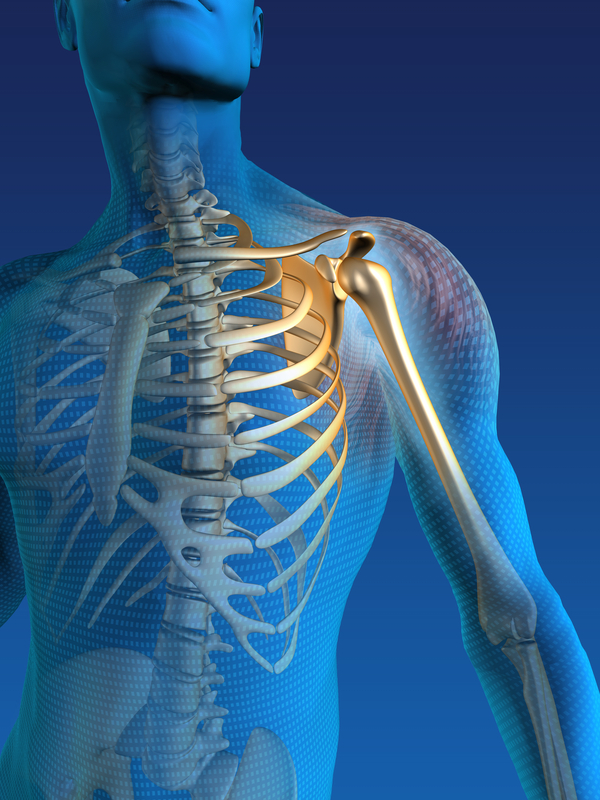
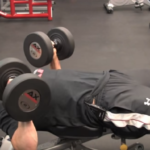
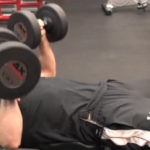
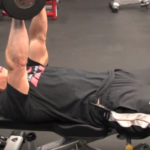
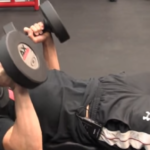
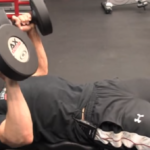

I had shoulder pain a weak ago and didn’t know what was causing it after looking it up, so I just took a break from lifting for a week. Today, the pain was very minimal, so I decided to start lifting again. When I was trying to get myself into position while holding the dumbells, my biceps started to hurt, so I searched why this was happening, and it let me here. The pain wasn’t too bad when it first happened, so I know I didn’t tear my labrum, but I guess I must have just pulled it or something, not sure. Either way, this tip really helped, so thank you very much!
You welcome.